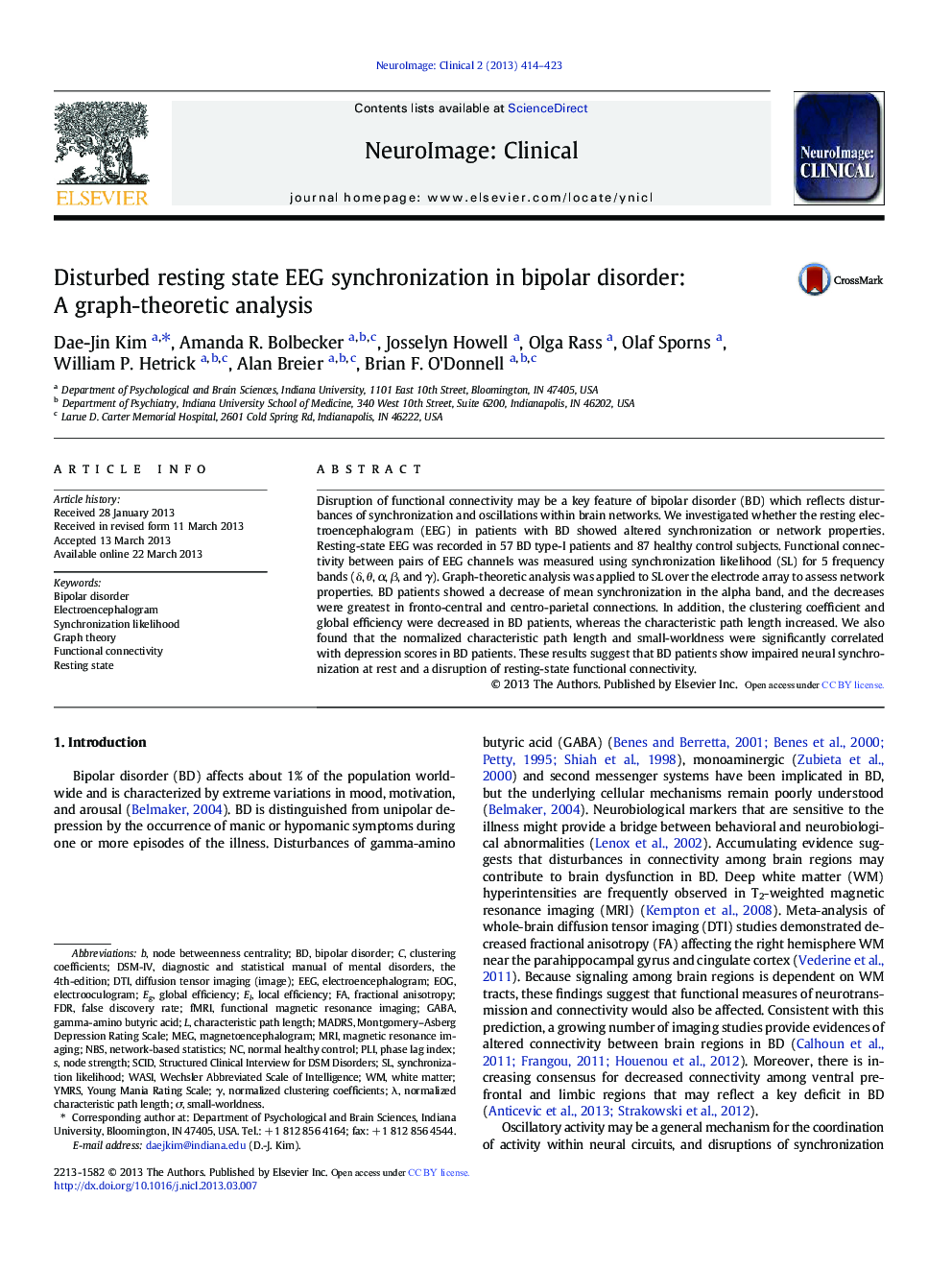| Article ID | Journal | Published Year | Pages | File Type |
|---|---|---|---|---|
| 3075524 | NeuroImage: Clinical | 2013 | 10 Pages |
•Global synchronization of BD patients was reduced in the alpha-band at resting.•De-synchronized connectivity was localized in fronto-centro-parietal connections.•Global topology of BD had decreased network clustering and increased path length.•BD showed the less efficient network processing.•Network characteristics of BD patients were associated with depression severity.
Disruption of functional connectivity may be a key feature of bipolar disorder (BD) which reflects disturbances of synchronization and oscillations within brain networks. We investigated whether the resting electroencephalogram (EEG) in patients with BD showed altered synchronization or network properties. Resting-state EEG was recorded in 57 BD type-I patients and 87 healthy control subjects. Functional connectivity between pairs of EEG channels was measured using synchronization likelihood (SL) for 5 frequency bands (δ, θ, α, β, and γ). Graph-theoretic analysis was applied to SL over the electrode array to assess network properties. BD patients showed a decrease of mean synchronization in the alpha band, and the decreases were greatest in fronto-central and centro-parietal connections. In addition, the clustering coefficient and global efficiency were decreased in BD patients, whereas the characteristic path length increased. We also found that the normalized characteristic path length and small-worldness were significantly correlated with depression scores in BD patients. These results suggest that BD patients show impaired neural synchronization at rest and a disruption of resting-state functional connectivity.
